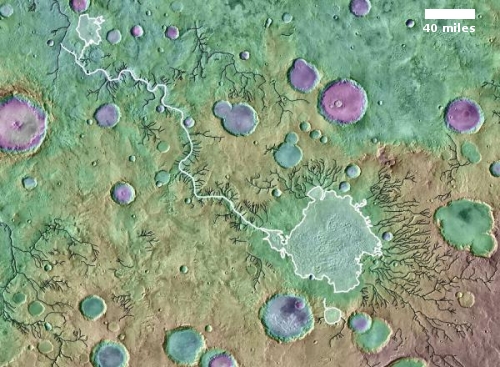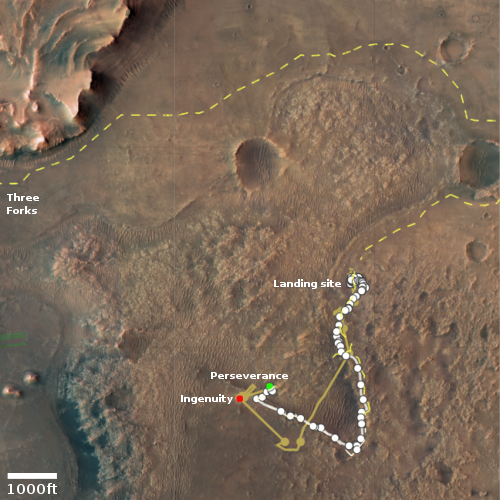A collapsing north wall in Valles Marineris
Cool image time! The photo to the right, rotated, cropped, and reduced to post here, was taken on July 17, 2021 by the high resolution camera on Mars Reconnaissance Orbiter (MRO). It shows what the scientists label as an alluvial fan.
I have also seen them label this kind of avalanche as mass wasting, where the material moves down slope suddenly in a single mass.
The image shows the aftermath of such an event, after a large blob of material broke free from the mountainside and slid almost as a unit downhill to settle more than two miles away on the floor of the canyon. The distance traveled and the blobby nature of the flow both reveal how the lower Martian gravity changes the nature of such events, compared to what you might see on Earth. The flows can travel farther, and can hold together as a unit easier.
The overview map below not only provides the context, but it tells us that such events are remarkably common in this place.
» Read more
Cool image time! The photo to the right, rotated, cropped, and reduced to post here, was taken on July 17, 2021 by the high resolution camera on Mars Reconnaissance Orbiter (MRO). It shows what the scientists label as an alluvial fan.
I have also seen them label this kind of avalanche as mass wasting, where the material moves down slope suddenly in a single mass.
The image shows the aftermath of such an event, after a large blob of material broke free from the mountainside and slid almost as a unit downhill to settle more than two miles away on the floor of the canyon. The distance traveled and the blobby nature of the flow both reveal how the lower Martian gravity changes the nature of such events, compared to what you might see on Earth. The flows can travel farther, and can hold together as a unit easier.
The overview map below not only provides the context, but it tells us that such events are remarkably common in this place.
» Read more






























